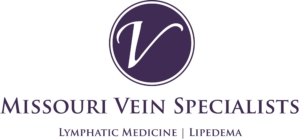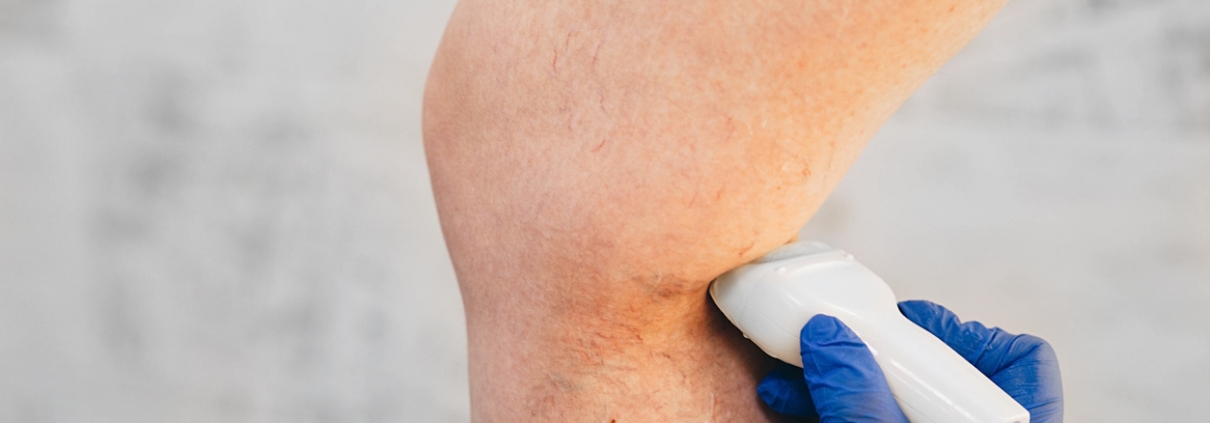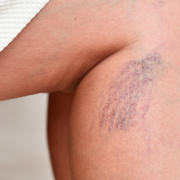How Do Spider Veins and Varicose Veins Form?
Varicose veins and their smaller version, spider veins, are a common circulatory condition that can result from having damaged or weakened valves in the veins. The valves are tiny parts of a vein that help to push the blood back to the heart for refortification and recirculation.
Whereas arteries are the blood vessels that bring oxygenated and nutrient-rich blood from the heart to the various cells and organs in the body, the veins are responsible for returning the “used” blood back toward the heart. In order to perform this function well, since the veins are so far away from the heart, each vein is equipped with a series of one-way valves that provide extra force to the circulation each time the heart pumps.
However, if the vein walls or the valves weaken, that segment of the vein can dilate, stretch, and twist – and if the vein is located close to the skin’s surface, it can appear visible. While spider veins are often considered a cosmetic issue, varicose veins can cause painful symptoms and, over time, can lead to complications.
How Do Veins Become Visible on the Skin?
As vein disease progresses, it can result in unsightly spider veins and varicose veins. If it develops aggressively without being treated, it can even result in ulcer formation – which are open sores where the vein has punctured through the skin.
Let’s talk about the differences and similarities between spider veins and varicose veins:
Spider Veins
Spider veins are small, thin, red or purple lines that are formed by the dilation of a small group of blood vessels located close to the surface of the skin. They can appear anywhere on the body, but they are most commonly found on the legs and face.
Oftentimes, spider veins develop because of abnormalities in the underlying veins which are under high pressure while feeding blood into the smaller blood vessels. Spider veins on the face are often the result of tiny blood vessels that have burst from increased pressure or sun damage.
Spider veins are usually considered superficial and inconsequential. Although they may occasionally cause discomfort, most of the time they are completely painless. However, if you do not want to see them on your legs and/or face, they can be easily treated and removed by a vein specialist.
Varicose Veins
Varicose veins are much larger in size than spider veins, and they are deeper under the skin. They usually develop in the legs and ankle areas, can bulge and twist in appearance, and can often be seen and felt just under the surface of the skin. Some patients may also have varicose veins which are not visible.
Some people with varicose veins experience uncomfortable symptoms such as aching, cramping, heaviness, and itching around the swollen veins. They may also experience restless leg symptoms, worsened pain after sitting or standing for a long time, and skin discoloration around the varicose vein.
Risk Factors for Varicose Veins
There are a number of factors that can increase your chance of developing spider veins or varicose veins, which can include:
- Heredity
- Obesity
- Being over age 30
- Being female
- Hormonal influences (puberty, pregnancy, menopause)
- Prolonged standing or sitting
- Lack of exercise
- History of blood clots
- Trauma, injury, or illness
- Previous surgeries
- Certain medications (such as birth control pills)
- Exposure to UV rays
Vein Specialist in Kansas City, MO
If you have troublesome veins that are causing you embarrassment or discomfort, talk to the medical team at Missouri Vein Specialists. Dr. Scott Darling has the expertise, knowledge, and experience to treat the full spectrum of vein disease.
For the best vein treatments in KCMO, call us today at (816) 792-3400 or fill out our appointment request form online now. We look forward to helping you get rid of those spider veins and varicose veins so you can enjoy beautiful skin once again.












